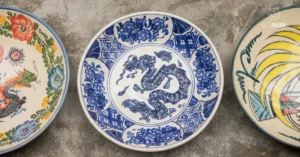
Papua is not only rich in natural resources—it is also home to diverse cultural traditions. Amid its stunning landscapes lies an abundance of customary practices that guide many aspects of daily life, including the dynamics between men and women. Among these traditions is Otepuri, a cultural practice of the Napiti tribe living on Lakahia Island, Kaimana, West Papua.
Cultural Taboos and Social Mediation
According to the Chief of the Napiti Tribe, Frans Amerbay, Napiti culture contains various social taboos that regulate interactions within families. One example is the prohibition against direct interaction or addressing one another by name between in-laws, such as between a son-in-law and mother-in-law. In this context, wood serves as an indirect medium of communication—an adat-based form of mediation that maintains decorum and social harmony. This practice is known as Otepuri.
Meaning and Origins
Otepuri comes from the Napiti language, derived from two words:
- “Ote”, meaning wood
- “Puri”, meaning taboo or sacred
The practice uses wood as a symbolic tool to express grievances or protests, particularly by women toward men.
Related Article: The Hunting and Gathering Traditions of the Irarutu People in Bintuni Bay
In the past, women—who were socially considered weaker—were given the opportunity to “strike” men or older individuals who were traditionally regarded as pamali (untouchable). This served as a symbolic form of retaliation for unfair treatment. Through this act, women asserted their dignity, status, and right to be respected, momentarily overturning the everyday norm that required them to show deference to older men.
Social and Gender Context
Traditionally, Napiti men served as primary providers, while women were often marginalized in social and domestic spheres. Within marriage, wives frequently experienced unfair treatment both from their husbands and from the larger family network of the husband’s side.
Otepuri creates symbolic space for women to assert equality and demand respect. The tradition is usually performed during New Year celebrations.
The Evolution of Otepuri
Over time, the meaning of Otepuri has evolved. What began as a physical practice rooted in pain and retribution has transformed into a gesture of affection, acknowledgment, and gender equality. Today, Otepuri is widely understood as a way of expressing care and love.
Related Article: The Wor Tradition and Expressions of Gratitude for Nature’s Gifts
In addition to its role in traditional ceremonies, Otepuri is now routinely held at the beginning of each year, around January 3–5. The timing is intended to enliven the Christmas and New Year festivities and, more importantly, to serve as a space for reconciliation among families. After a year of living side by side—often with conflicts or tensions—Otepuri becomes an avenue to renew commitments to harmony and peaceful coexistence in the coming year.
In modern interpretations, the practice has become a cultural celebration that emphasizes mutual respect between women and men, without any form of violence.
Changing Mediums: From Wood to Sago and Mud
In contemporary practice, Otepuri no longer uses wood. Instead, women apply sago or mud to men.
This shift reflects new values that emphasize gentleness, life, and a close relationship with nature. Sago and mud hold deep significance as sources of nourishment and symbols of spiritual connection to the land. They reinforce the idea that traditional foods are not merely sustenance—they are part of identity, heritage, and cultural continuity.




